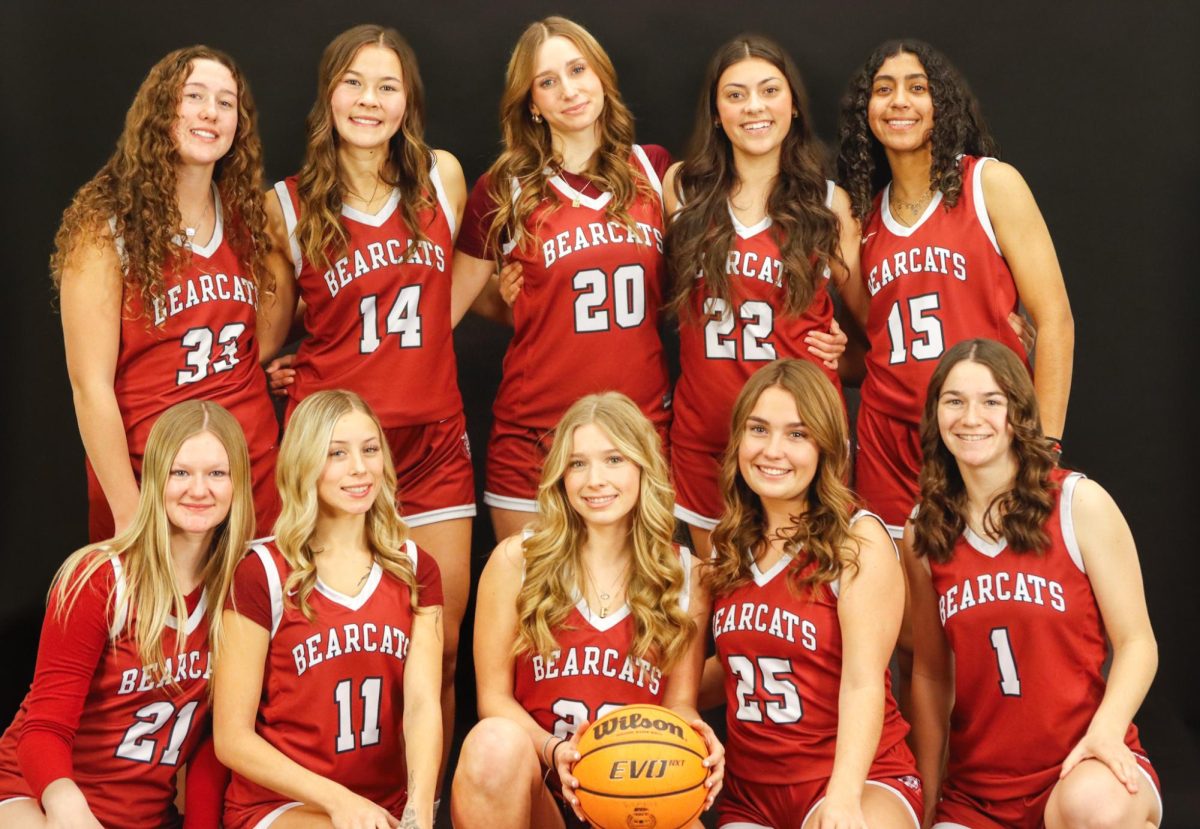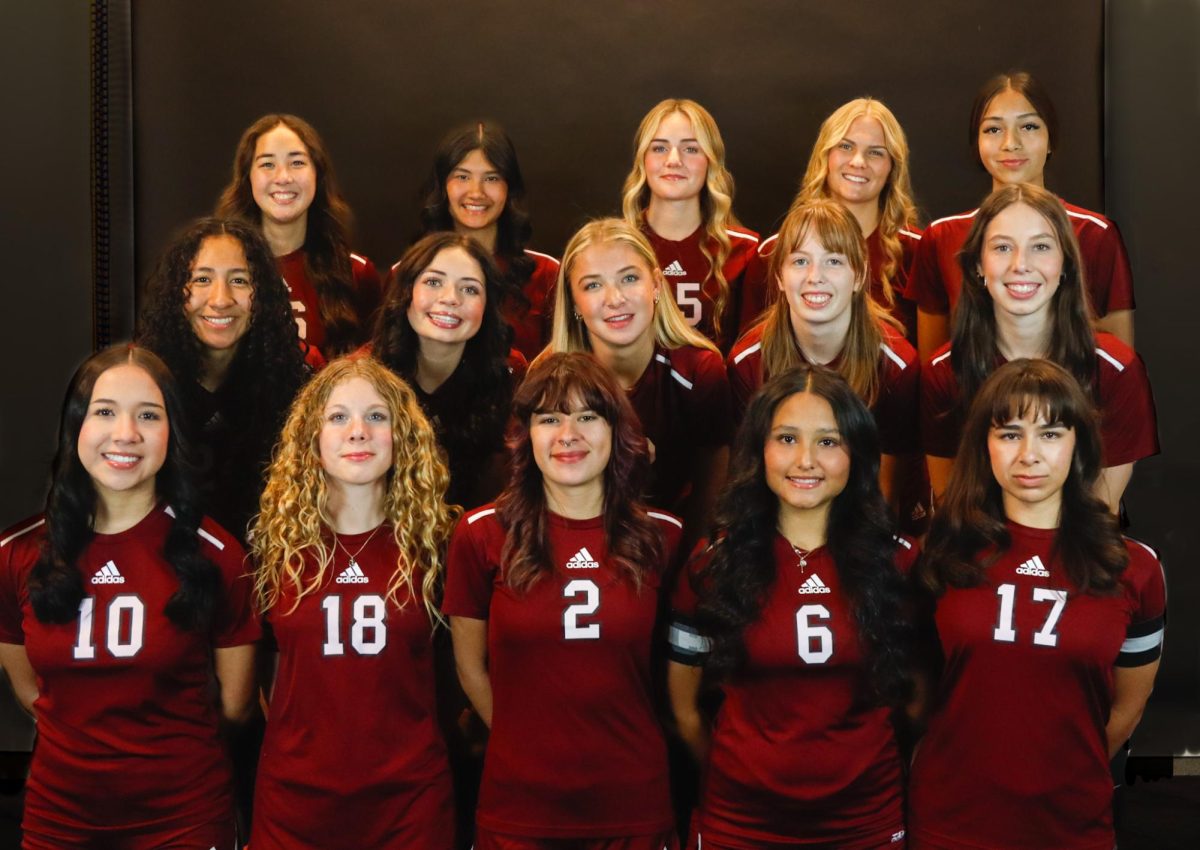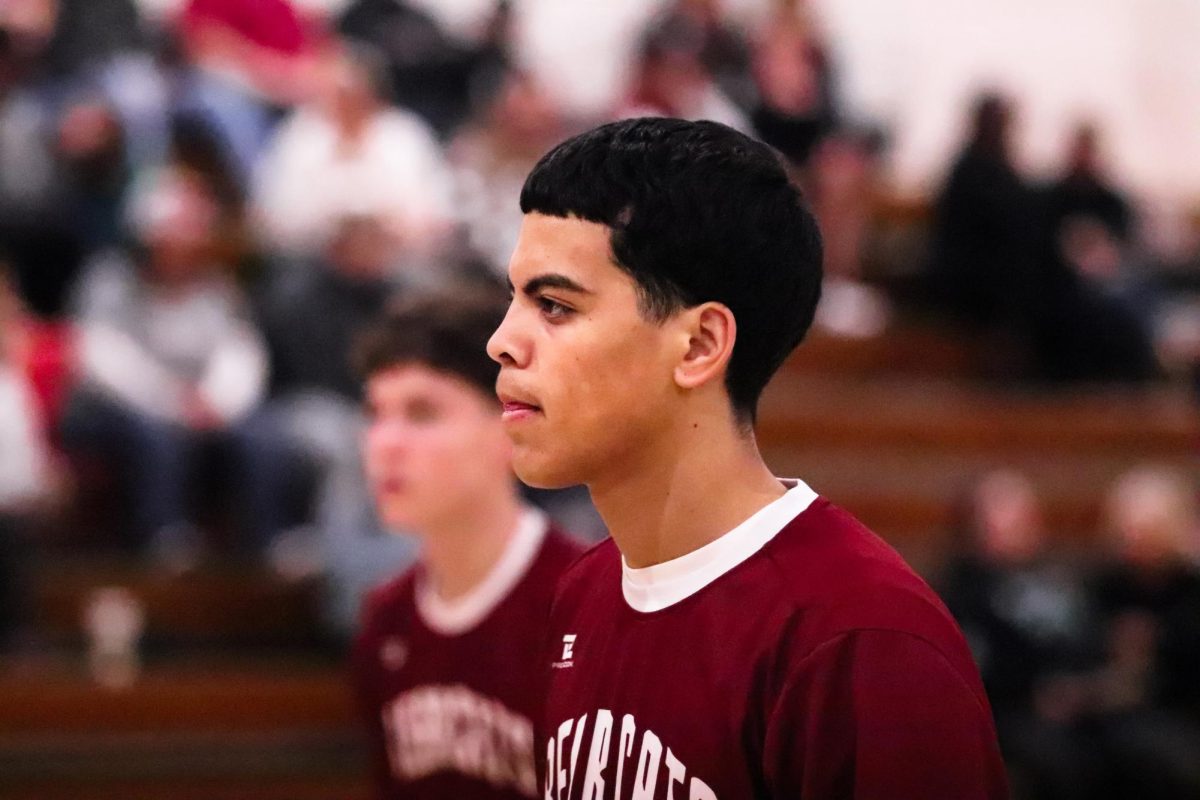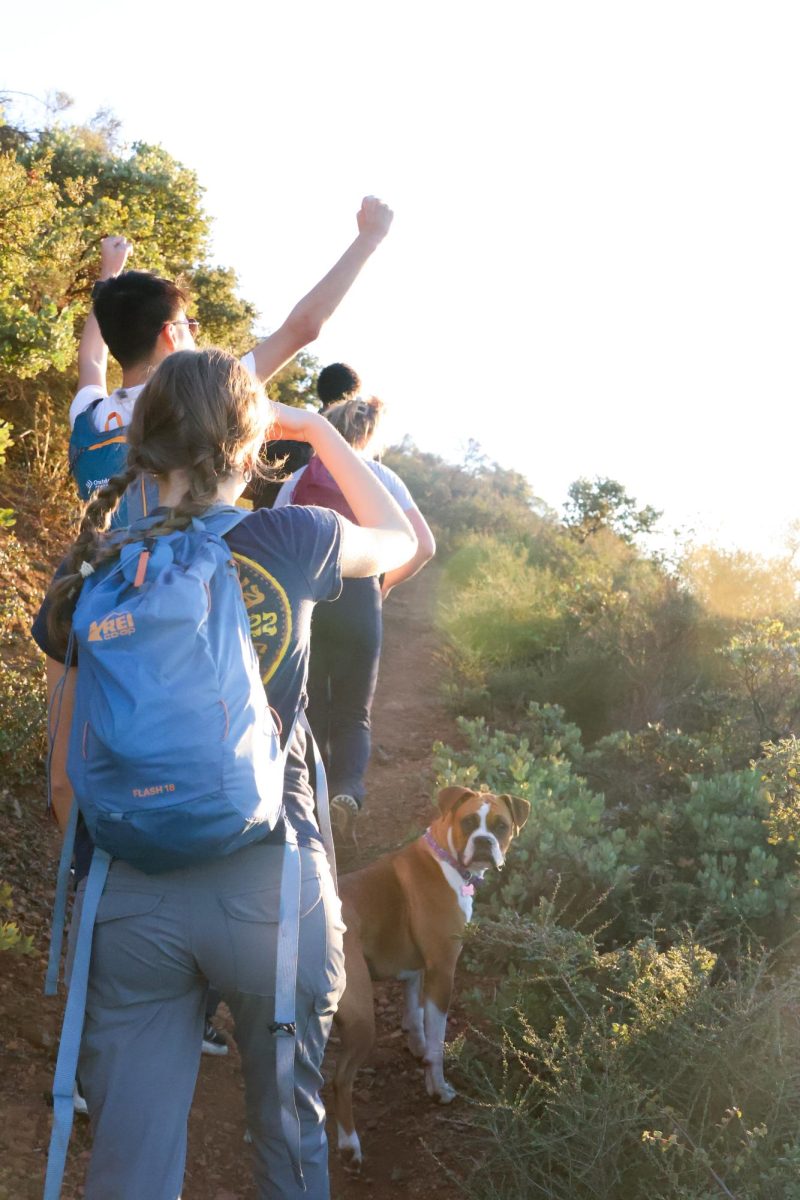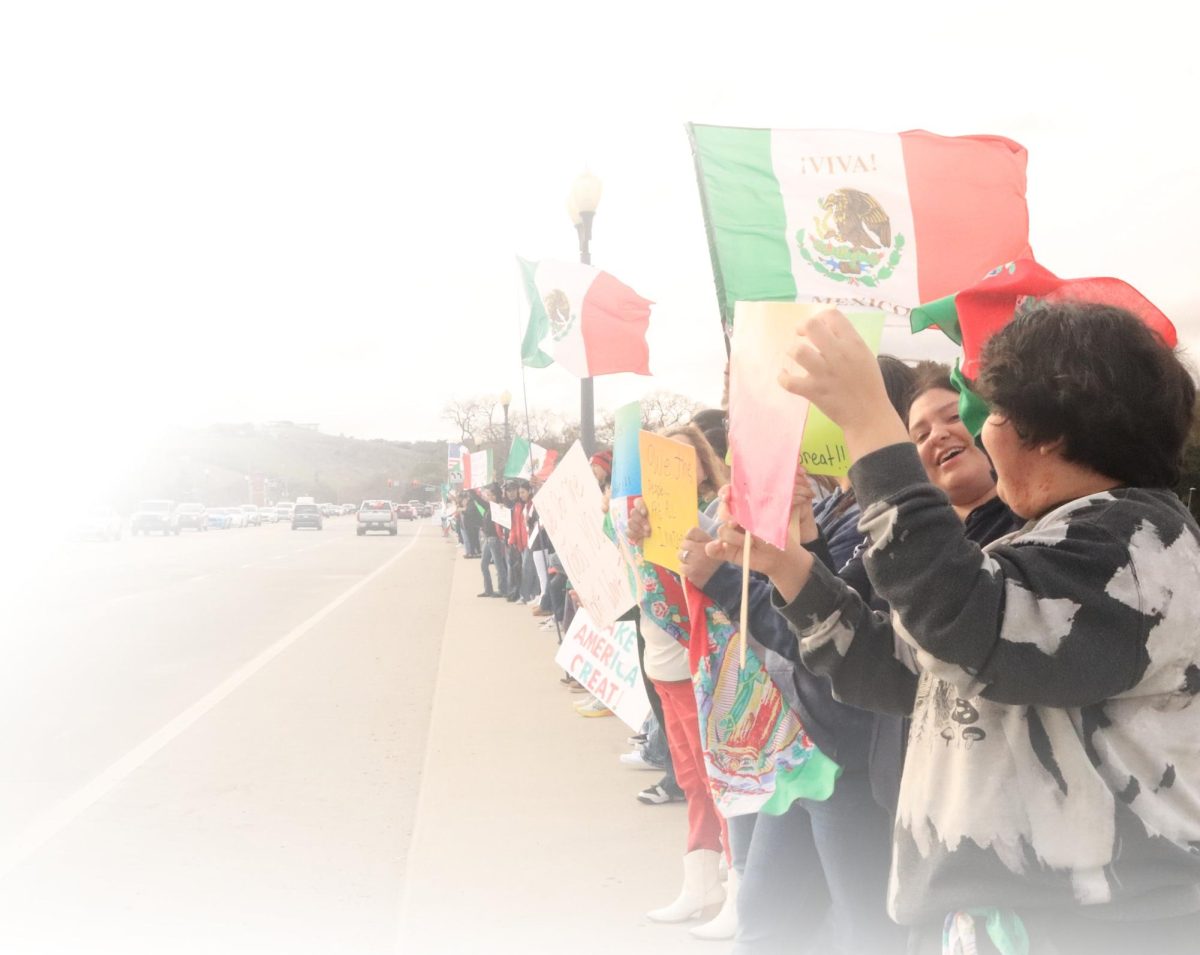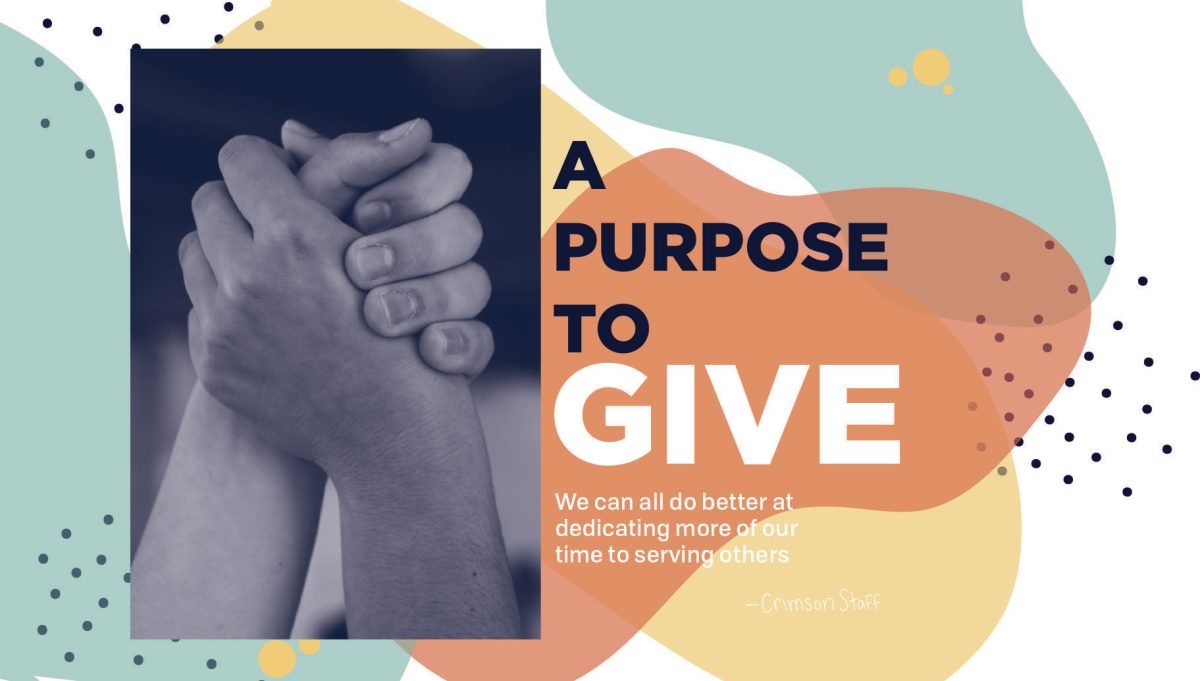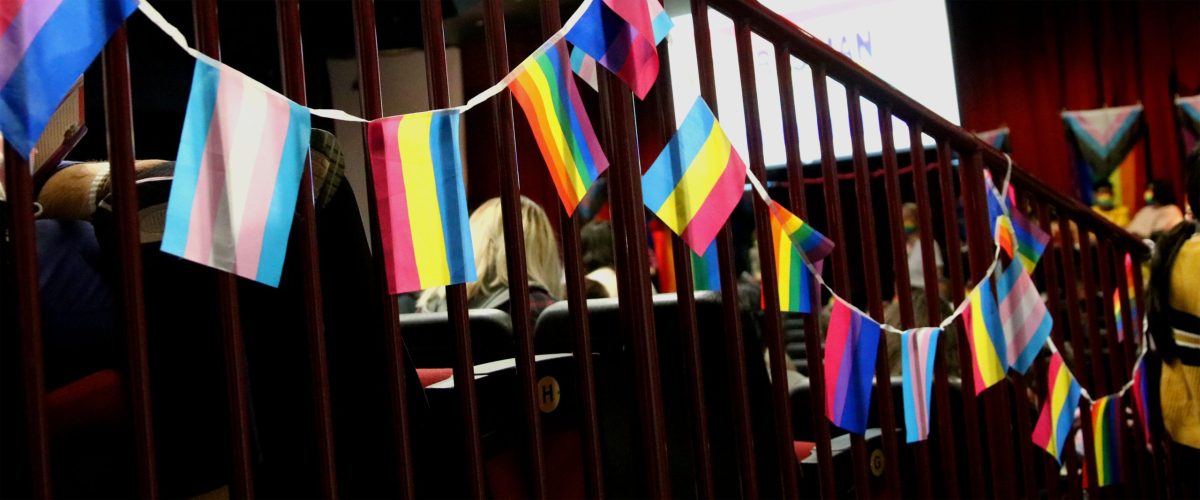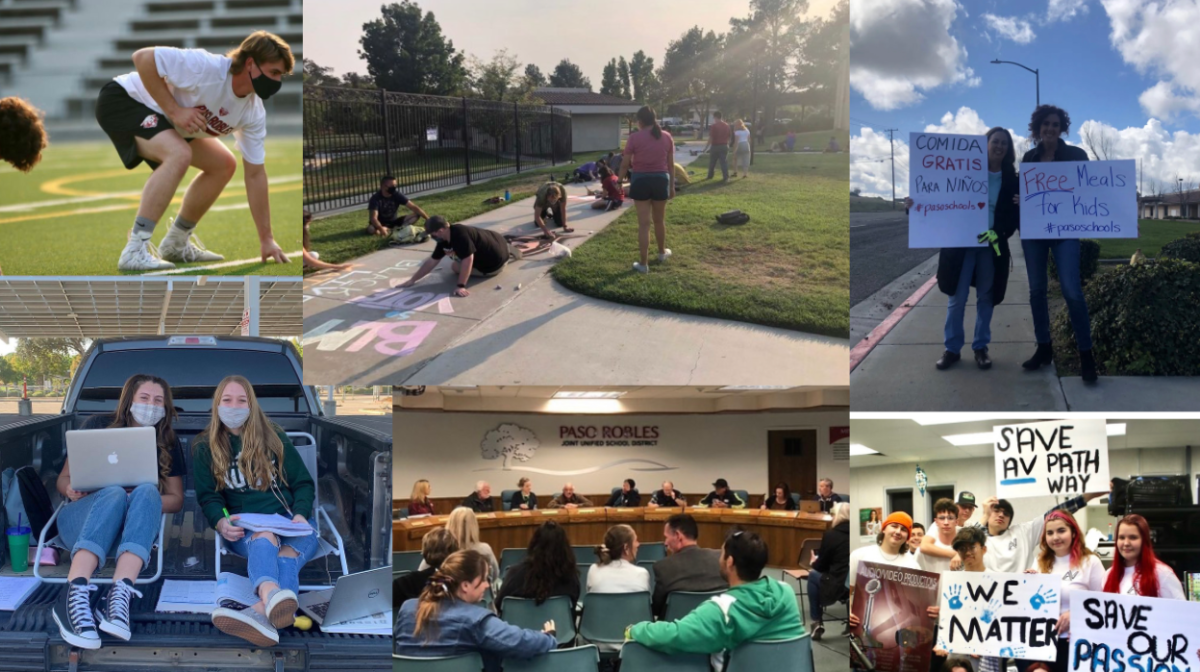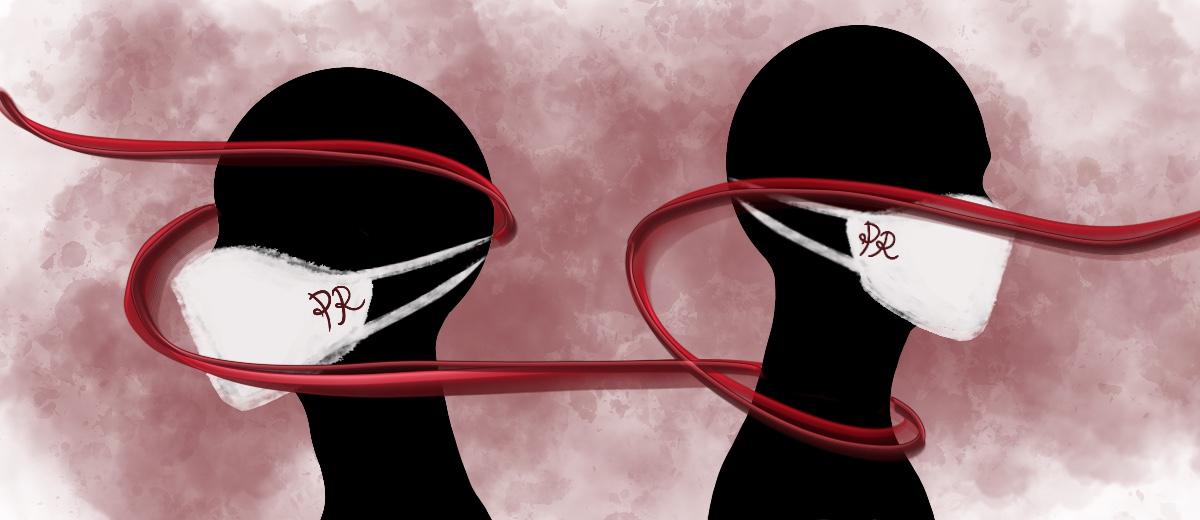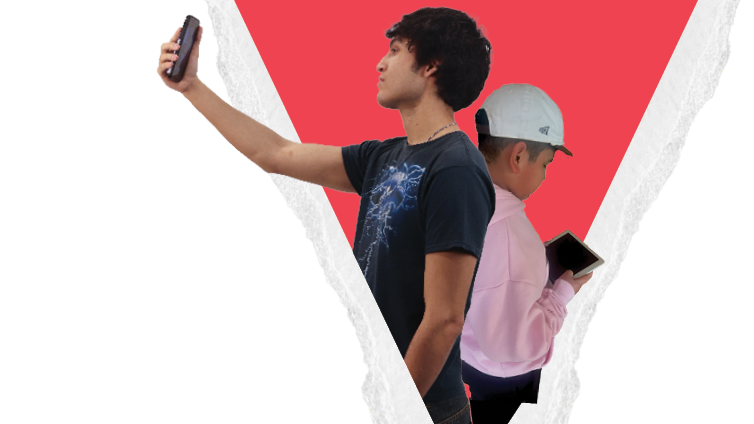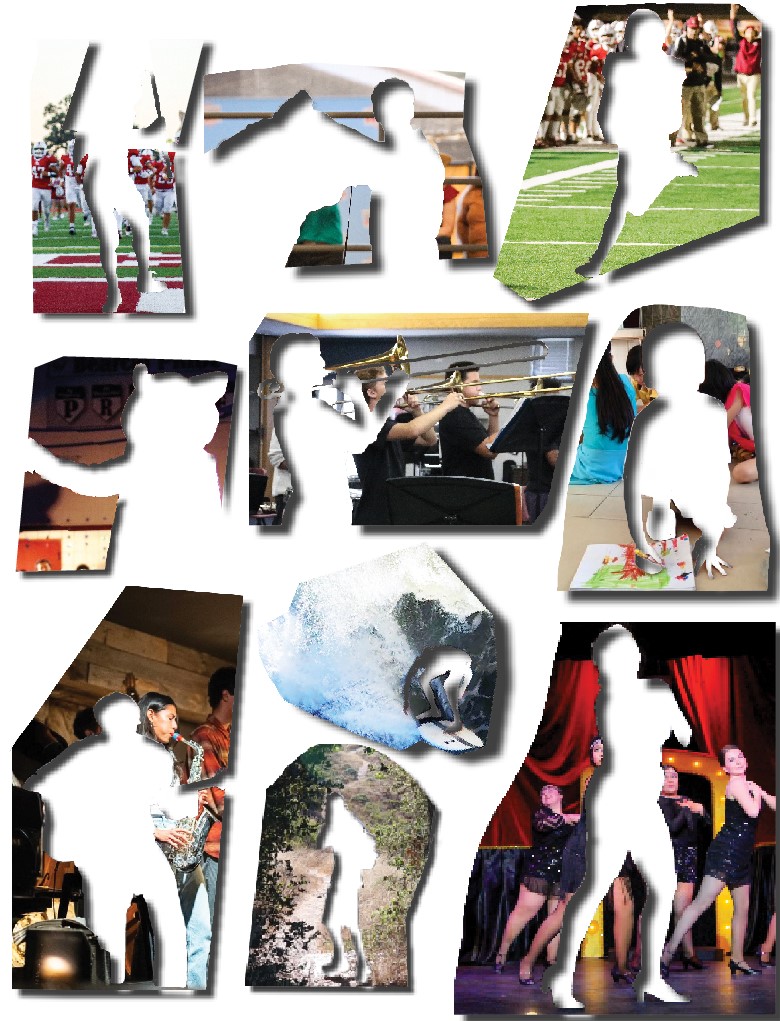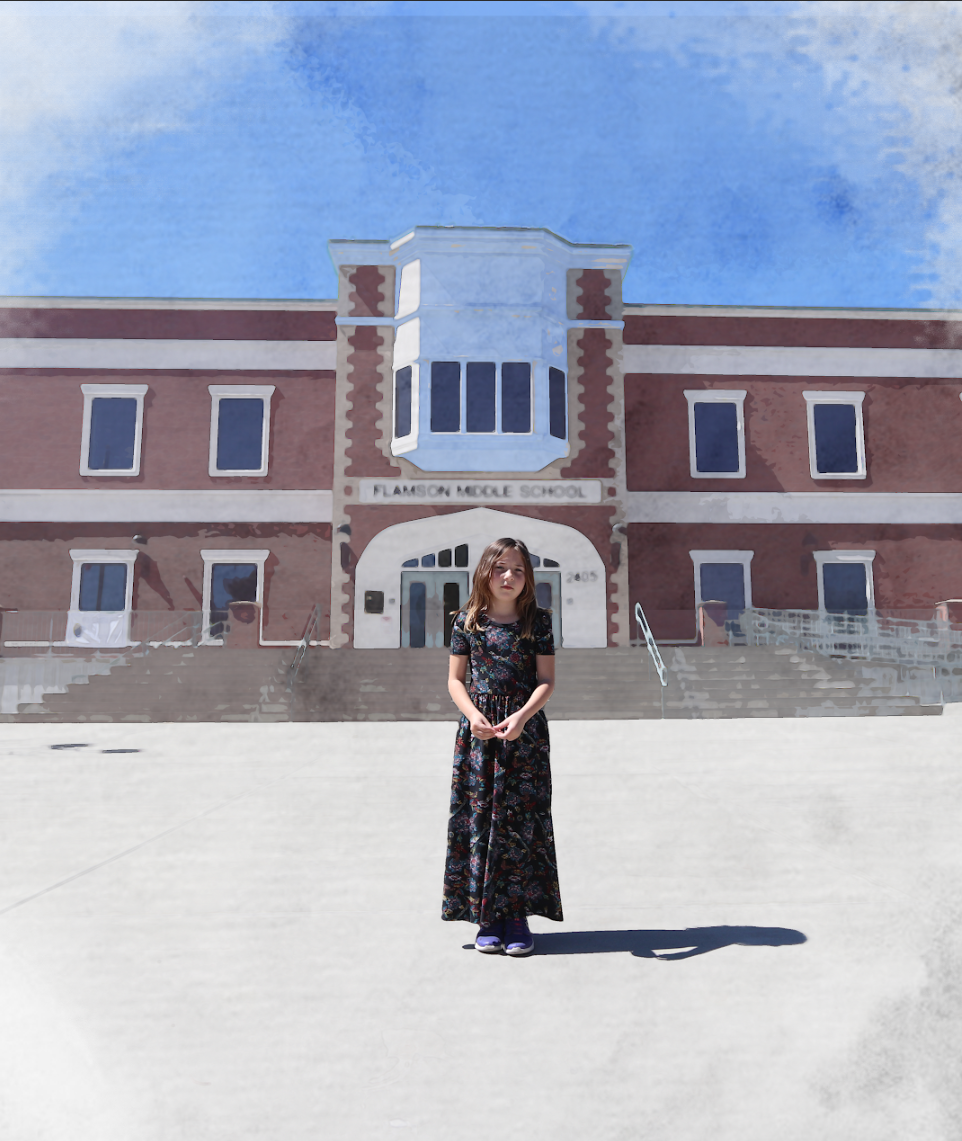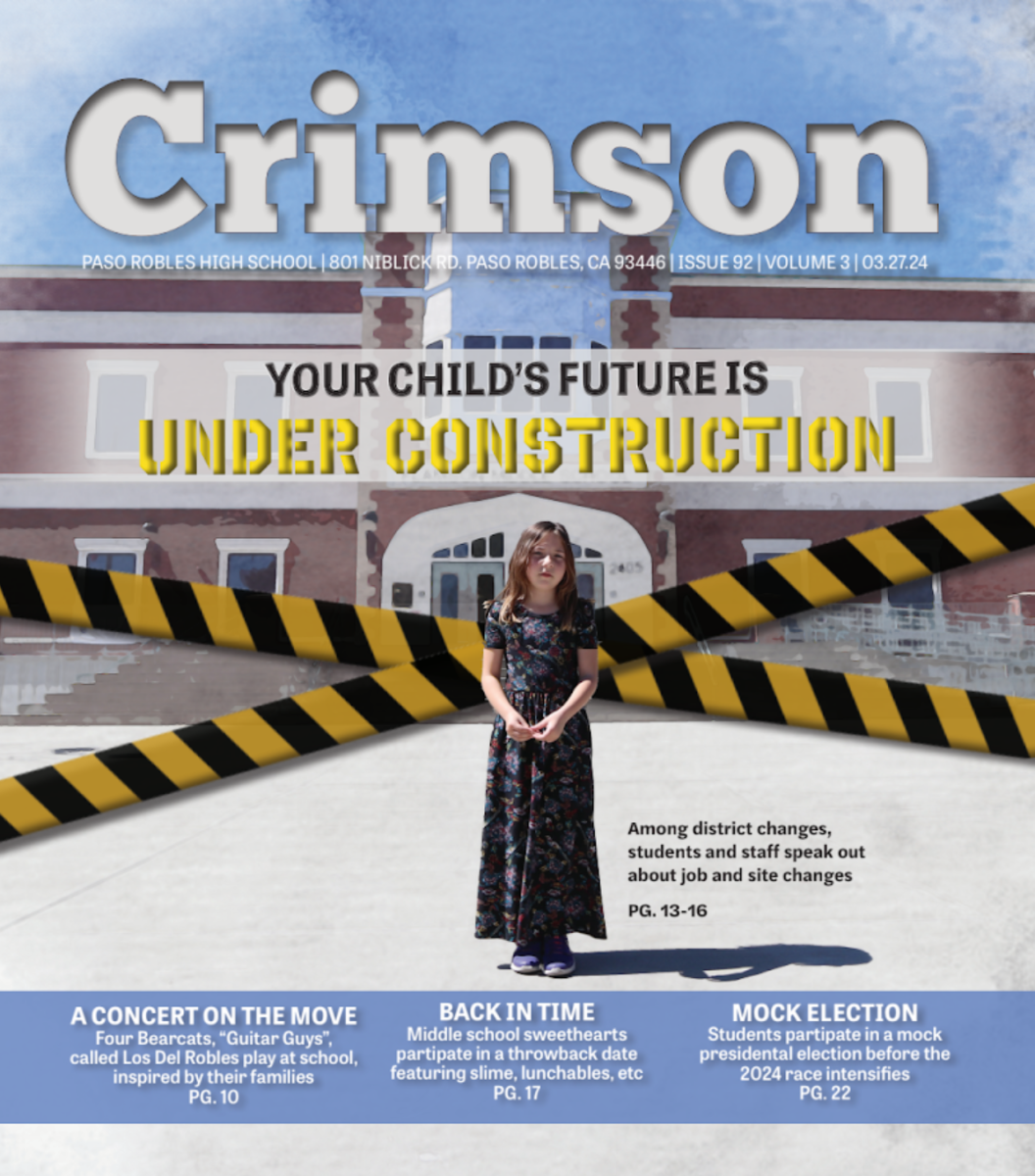
INTRO
by Malia Gaviola
The Fall of the school year is a time of growth and new experiences: freshmen scuttling around not knowing where their classes are; seniors ready for their last year at as Bearcats; new staff entering the Bearcat family while the holes of those who have left are still healing;teachers and staff and students ready to make new connections.
However, after a year of quarantine and a few months of hybrid learning, the PRJUSD Board decided that students would be returning to an eight hour day for the first time in two years. Back to school, back to normal.

Though, as Aug. 19 rolled around and students walked through the gates on the first day , they found that the “new” normal was both alike and different from past years.
This in-depth section will explore the two sides of back to school: coming back during COVID times and to an unfamiliar schedule that has affected students’ lives.
An 8:30 start, two lunches separating the campus, and shorter nutritions/passing periods has affected friendships, wake up times, and attitudes of students.
Likewise, COVID procedures that were either introduced or adapted as the pandemic and positive results in the county fluctuated, left students masked, sometimes quarantined , and faced with potential vaccine mandates.
Back to school at Paso Robles High School has ushered in a period of change that has left many students excited to return–yet disgruntled. They are motivated to battle in sports, learn in new classes, and dance again–yet there is dislike of the new. They must juggle both back-to-school COVID policies and a new schedule, and the consensus on each topic is mixed.
A survey of over 350 students, plus interviews and research, will explore these two sides of back to school.
Back to school has allowed staff and students to strive to finally make connections without a screen separating them. It still has freshmen searching for classes on campus, lost… though sophomores are wandering along with them. Seniors are still looking forward to a final year with a hope that they won’t be sent back to distance learning. Crimson news magazine investigates the new rules, regulations, controversies of starting a new school year in COVID times.
photos/graphics by Rayvin Wulfing
EDITORIAL
by Rayvin Wulfing

It is without a shadow of a doubt that 50 years from now, this time will be known as the COVID ERA. Students will flip through their history textbooks and see the forbidding year labeled 2020 that we all know a little too well. They will glide over pages filled with “Covid Death Rate” infographics, lists of “Covid Procedures,” descriptions of mask and vaccine mandates…and most of all the political polarization on pandemic policy.
As a nation, we simply cannot agree on what is best for our country. Is it more beneficial to require all citizens to be vaccinated for the common good? Or is it considered unconstitutional to mandate a controversial vaccine?
We want to question our trajectory as a nation. Will we continue to bicker and fight over who’s right and who’s wrong as we manage coronavirus? Will we judge people who don’t wear masks, or people who don’t get vaccinated because they are viewed as “selfish?” Will we label others as “ignorant,” or “naive” for listening to government officials about public health policies? Are we self-righteous when we distrust the government?
We think that it is essential for you to stand up for what you believe in, and advocate for your beliefs for the growth of a healthy nation. However we challenge this and every generation in the COVID ERA, to consider alternative perspectives and care deeply for unity. A threatening divide makes us all victims.
We propose that we should spend more time thinking about what we have to be thankful for and reminisce over all the good things in our lives. When we realize all we have to be grateful for, we will begin to repair the divide: we often are grateful for the same things.
For the majority of our community, and the world as a whole, something to be grateful for is the fact that we– the students, teachers, and other faculty members–are BACK IN SCHOOL. So what if we have to suffer the inconvenience of wearing masks, or getting the occasional covid test? At least we are back to in-person learning! And for students or teachers who would prefer to continue distance learning, they have the ability now to do so!
We have a sports season this year! Last year many teams experienced a short season, or no season at all, so that’s one more thing to be thankful for.
Ah, joyousness of social interactions. We get to see family and friends now without the fear of infection or death. Because of the intense research, and advancement in health safety, retail stores and restaurants are open again
We cannot afford to take what we consider to be “normal” for granted. We must find a way to appreciate more, or else we will be bound to the shackles that divide us if we criticize opponent or refuse to listen to the shortcomings of our favorite views.
So despite the rules, protocols, mandates, and policy changes at our school and beyond, let us demonstrate our gratitude for all that we have in our lives and the very gift of society itself. Especially during a time of an increased fear, let’s spend more energy on the privilege and gift of living
Then we will once again be the United States of America.
photos/graphics by Rayvin Wulfing
2 SIDES TO A NEW BELL SCHEDULE
by Malia Gaviola
The complaints piled high as the school year has rolled out. Third period students in the east campus were sent to early Lunch A. West campus students headed to fourth period, launched afterward, and the whole day started 30 minutes later than any year in anyone’s history. It was a recipe for perfect grumbling and a logical result of available resources and Senate laws.
Students of course were quick to state the issues they disliked about the lunch: separations from friends and routines. In an Oct. 5 survey of 354 students, 65.5% of students stood against the split lunches and speak openly of the social costs.
“It causes a multitude of inconveniences for students i.e. not being able to meet with teachers during lunch, most clubs not being able to have meetings during lunch, not being able to sit with friends. I think it’s causing more trouble than it’s worth,” a sophomore said, encapsulating most of the student issues with the schedule.
“I never see my friends and it makes me feel so lonely and left out when half of my friends have a different lunch period,” the junior said. “If the friends I have in my lunch period are absent, I have to sit alone in the library at lunch. And it sucks. Lunches are so bad when you don’t have any friends to hang out with.”
Assistant Principal Michael Godsey maintained that the two lunches were enacted because PRHS has over 2,000 students enrolled and that is a staggering number to oversee at one time.
“I’m sure there are other little reasons [why we should have split lunches], but the main one, the real one, is safety,” Godsey said. “There’s just so many kids at this huge high school. If there was a big safety situation that we want to make sure that we have enough security to handle it.”
Only 15% of students have been able to see the bright side of the smaller lunches as they wrote because there are fewer people, it is less crowded, more places to sit, shorter lunch lines, and fights can be dispersed quicker. Over five fights have plagued the campus since 2019.
Moreover, the first day of school is associated with waking up “early” for the first time since summer started. Yet on Jan. 1, 2020 Senate Bill 328 prohibited high school instruction from beginning until after 8:30 a.m.–zero period excluded.
A “Back to School” survey Oct. 5, 59.8% of students were “for” the 8:30 start.
“ I think it really helps students who live far away get a chance to sleep in a little later and have a somewhat better mental health,” said a sophomore.
On the other hand, 19.5% were against the late start, citing a later start leads to a plethora of consequences.
“I always come home later now after school because of practice, which means that I start homework late and I end up staying up late,” a junior said.
Yet, changing the start time of the high school was the least of the changes in the schedule: the most infamous of all, split lunches split the student body to PRHS.
Despite 50.1% of surveyed students stating that they know the rationale behind the lunch policy in a free-response section where they could write the reason, many students stated that it was to reduce the spread of COVID-19.
Godsey sympathized with students struggling at this time. He acknowledged the fact that students are disgruntled with not being able to see their peers and that they should look ahead.
“What advice would I give is that this is a new opportunity to make new friends and meet new groups to get outside your circle a little bit,” Godsey said. “I encourage them [students struggling] to see their friends at nutrition, within their own classes, and that there’s a whole lifetime of after school and on weekends. Now it’s all the more exciting to see them at dances or other school activities.”

2 SIDES TO COVID
by Rayvin Wulfing
Addressing Vaccine Mandate
In the face of Governor Gavin Newsom’s plans to require COVID 19 vaccinations for students on Oct 1, many PRHS students surveyed objected to his mandate, sharing a variety of convictions and questions.
California is the first state in the nation to announce such a measure, but it is not a policy supported by 51% of students according to a survey of over 350 students conducted between Sept 28-Oct 8, 2021.
“I think we should have the choice and be able to decide what is best for us as individuals. If you want it, great. If not, then don’t get it,” one student wrote.

Student Voices
I think if everyone at school was vaccinated I would feel much more safe.
Junior
I believe it’s everyone’s freedom to choose whether or not they get the vaccine. As Americans we should have the final say and not be forced to take it.
Senior
For the health of our community, I believe all students and staff at the high school should be mandated to get the vaccine. Vaccines are intended to protect our health, not to be a political divide among people.
Teacher
I do not think students should be required to get the COVID vaccine. I should be able to decide what I feel is right to put in my body.
Sophomore
Another student said, “People should be free to decide if they want to get a certain vaccine. No one should be limited to going to public school and getting an education. Those who have the underlying conditions should be free to get vaccinated if they want, but nobody should be forced to do it if they aren’t comfortable with it. We especially shouldn’t practice the use of forcing parents to abide by the district telling them how to care for their child through a controversial supplement.”
Still, student convictions pale next to CDC data. Over 396 million doses of COVID-19 vaccine have been given in the United States from December 14, 2020, through October 4, 2021, according to the CDC.gov.
The CDC recommends that all U.S. individuals receive the vaccination. In California, 28,542,080 people (72.24% of the population) have received at least one dose. Overall, 23,482,292 people or 59.43% of California’s population have been fully vaccinated.
“COVID-19 vaccines were evaluated in tens of thousands of participants in clinical trials. The vaccines met the Food and Drug Administration’s (FDA) rigorous scientific standards for safety, effectiveness, and manufacturing quality needed to support approval or authorization of a vaccine,” the site claims, as of press time.
While millions of people have trusted that vaccines have undergone and will continue to undergo the most intensive safety monitoring in U.S. history, Bearcat students have prioritized the freedom to choose whether or not they should get the vaccine.
Students will be required to be vaccinated for in person learning starting the school term following FDA full approval of the vaccine for their grade span (7-12 and k-6) Upon full approval by the Food and Drug Administration (FDA).


Based on current projections for full approval for ages 12+, the expectation is that the requirement would apply to grades 7-12 starting on July 1, 2022.
Back in August, California also led the country in requiring all teachers and school staff to either get vaccinated for COVID-19 or undergo weekly testing and “schools must be in full compliance by October 15, 2021,” (ca.gov, Office of Gavin Newsome).
“For the health of our community, I believe all students and staff at the high school should be mandated to get a vaccine. People seem to forget that we have many mandated vaccines in our country. In order for any of us to attend a public school we all received vaccines as young children. Vaccines are intended to protect our health, not to create a political divide among people,” one teacher wrote.
Student attitudes stand in contrast to the adults who teach them. Nearly all 100-plus PRHS teachers and admin staff have been vaccinated. Those who haven’t (or decline to state) must test weekly. Similarly, the National Education Association, the nation’s largest union representing nearly 3 million educators, has been tracking vaccination reports since February 2021. In their most recent survey, 86% of teacher members have had at least one shot.
Students at PRHS think requiring vaccination for teachers is good for their educators. 42 % of students (in a survey of over 350) think that teachers should be required to get vaccinated. 12% of students do not think teachers should be required, 10% say they are not “informed enough to say,” and 36% have no opinion.

Though the majority of students (57%) are either pro/against covid vaccination, 10 % think that regardless of their opinion, students should have a choice.
Some students wrote of the importance of a public vaccination campaign. Many students who support getting a COVID vaccination urge students and teachers to get it so that “everything can get back to normal.” Another student wrote, “It is something people should take to stay safe and go back to a ‘normal’ life.”
Another student said, “I’m all for the COVID vaccine. I think it’s important to take every measure possible against COVID so that people won’t keep dying and that we can all go back to a somewhat normal life.”
One student who is opposed to the vaccination believes that the eradication of COVID is too idealistic of a view, therefore it should not be required.
“I don’t really care if people do or don’t take it. Their health is none of my business. Personally, I’d like to see if there are long term effects, and I don’t see much of a reason for younger people with no underlying conditions to take it. People expect the vaccine to eradicate covid completely, but it seems to me as though this is an overly idealistic view.”
Another student believes that there is not enough scientific evidence to support covid vaccinations. “I do not support it. I don’t believe it has been tested and studied enough to thoroughly actually help without repercussions. Not only that but I don’t think it should be required either. And if the covid vaccine is so effective, then why should people around them still be forced to wear masks, if the vaccine really does it’s job? People who get the vaccine are still spreading covid and are still catching it, and even dying from it.”
Addressing Mask Regulations
Students also doubt the effectiveness of masks. 88% think that face coverings should not be required to be worn outside. “Face coverings must be worn everywhere on campus, indoors/outdoors, and on buses,” regardless of ability to maintain 6ft apart, according to the Paso Robles Joint Unified School District (PRJUSD) COVID 19 Prevention Program handbook (CPP).

According to the CPP, face coverings with an exhalation valve or vent and surgical masks are not acceptable to be worn at school. Face coverings may be removed during meals, snacks, and drinking as long as 6 feet distance is maintained from others. Participants in sports are required to wear face coverings when participating in the activity, even with heavy exertion as tolerated, both indoors and outdoors–unless the face covering could become a hazard. Face coverings may also be removed when an employee is alone in a room.
“Face masks are required in all indoor settings per public health. They are not required in outdoor settings,” said Deputy Superintendent, Jennifer Gaviola.
“Public health mandates face masks in k-12 settings because they state: face masks block up to 50-70% of fine droplets and particles that were not captured. Cloth masks also reduce the wearers’ exposure to infectious droplets by filtering fine droplets and particles,” Gaviola said.
The CPP also states that schools in the PRJUSD must “perform routine environmental cleaning following CDC Guidelines” and “routinely clean all frequently touched surfaces.”
Amidst this new era of guidelines and preventative measures, PRHS students want to be able to decide for themselves whether or not they should be vaccinated. While most students (66.1%) agree with the mandatory indoor mask wearing regulation at the high school, most believe that they should choose whether getting the vaccine is the right choice for them.
photos by Rayvin Wulfing, graphics by Malia Gaviola, Serenity Wulfing and Rayvin Wulfing
In the face of Governor Gavin Newsom’s plans to require COVID 19 vaccinations for students on Oct 1, many PRHS students surveyed objected to his mandate, sharing a variety of convictions and questions.
California is the first state in the nation to announce such a measure, but it is not a policy supported by 51% of students according to a survey of over 350 students conducted between Sept 28-Oct 8, 2021.
“I think we should have the choice and be able to decide what is best for us as individuals. If you want it, great. If not, then don’t get it,” one student wrote.

I think if everyone at school was vaccinated I would feel much more safe.
Junior
I believe it’s everyone’s freedom to choose whether or not they get the vaccine. As Americans we should have the final say and not be forced to take it.
Senior
For the health of our community, I believe all students and staff at the high school should be mandated to get the vaccine. Vaccines are intended to protect our health, not to be a political divide among people.
Teacher
I do not think students should be required to get the COVID vaccine. I should be able to decide what I feel is right to put in my body.
Sophomore
Another student said, “People should be free to decide if they want to get a certain vaccine. No one should be limited to going to public school and getting an education. Those who have the underlying conditions should be free to get vaccinated if they want, but nobody should be forced to do it if they aren’t comfortable with it. We especially shouldn’t practice the use of forcing parents to abide by the district telling them how to care for their child through a controversial supplement.”
Still, student convictions pale next to CDC data. Over 396 million doses of COVID-19 vaccine have been given in the United States from December 14, 2020, through October 4, 2021, according to the CDC.gov.
The CDC recommends that all U.S. individuals receive the vaccination. In California, 28,542,080 people (72.24% of the population) have received at least one dose. Overall, 23,482,292 people or 59.43% of California’s population have been fully vaccinated.
“COVID-19 vaccines were evaluated in tens of thousands of participants in clinical trials. The vaccines met the Food and Drug Administration’s (FDA) rigorous scientific standards for safety, effectiveness, and manufacturing quality needed to support approval or authorization of a vaccine,” the site claims, as of press time.
While millions of people have trusted that vaccines have undergone and will continue to undergo the most intensive safety monitoring in U.S. history, Bearcat students have prioritized the freedom to choose whether or not they should get the vaccine.
Students will be required to be vaccinated for in person learning starting the school term following FDA full approval of the vaccine for their grade span (7-12 and k-6). Upon full approval by the Food and Drug Administration (FDA) of a vaccine for age groups within each grade span, the CDPH will consider relevant recommendations from the Advisory Committee on Immunization Practices of the United States Department of Health and Human Services, the American Academy of Pediatrics, and the American Academy of Family Physicians prior to implementing a requirement, as required by the Health and Safety Code section 120335(b)(11).
Based on current projections for full approval for ages 12+, the expectation is that the requirement would apply to grades 7-12 starting on July 1, 2022.
Back in August, California also led the country in requiring all teachers and school staff to either get vaccinated for COVID-19 or undergo weekly testing and “schools must be in full compliance by October 15, 2021,” (ca.gov, Office of Gavin Newsome).
“For the health of our community, I believe all students and staff at the high school should be mandated to get a vaccine. People seem to forget that we have many mandated vaccines in our country. In order for any of us to attend a public school we all received vaccines as young children. Vaccines are intended to protect our health, not to create a political divide among people,” one teacher wrote.
Student attitudes stand in contrast to the adults who teach them. Nearly all 100-plus PRHS teachers and admin staff have been vaccinated. Those who haven’t (or decline to state) must test weekly. Similarly, the National Education Association, the nation’s largest union representing nearly 3 million educators, has been tracking vaccination reports since February 2021. In their most recent survey, 86% of teacher members have had at least one shot.

Students at PRHS think requiring vaccination for teachers is good for their educators. 42 % of students (in a survey of over 350) think that teachers should be required to get vaccinated. 12% of students do not think teachers should be required, 10% say they are not “informed enough to say,” and 36% have no opinion.
Though the majority of students (57%) are either pro/against covid vaccination, 10 % think that regardless of their opinion, students should have a choice.
Some students wrote of the importance of a public vaccination campaign. Many students who support getting a COVID vaccination urge students and teachers to get it so that “everything can get back to normal.” Another student wrote, “It is something people should take to stay safe and go back to a ‘normal’ life.”
Another student said, “I’m all for the COVID vaccine. I think it’s important to take every measure possible against COVID so that people won’t keep dying and that we can all go back to a somewhat normal life.”
One student who is opposed to the vaccination believes that the eradication of COVID is too idealistic of a view, therefore it should not be required.
“I don’t really care if people do or don’t take it. Their health is none of my business. Personally, I’d like to see if there are long term effects, and I don’t see much of a reason for younger people with no underlying conditions to take it. People expect the vaccine to eradicate covid completely, but it seems to me as though this is an overly idealistic view.”
Another student believes that there is not enough scientific evidence to support covid vaccinations. “I do not support it. I don’t believe it has been tested and studied enough to thoroughly actually help without repercussions. Not only that but I don’t think it should be required either. And if the covid vaccine is so effective, then why should people around them still be forced to wear masks, if the vaccine really does it’s job? People who get the vaccine are still spreading covid and are still catching it, and even dying from it.”
Students also doubt the effectiveness of masks. 88% think that face coverings should not be required to be worn outside. “Face coverings must be worn everywhere on campus, indoors/outdoors, and on buses,” regardless of ability to maintain 6ft apart, according to the Paso Robles Joint Unified School District (PRJUSD) COVID 19 Prevention Program handbook (CPP).
According to the CPP, face coverings with an exhalation valve or vent and surgical masks are not acceptable to be worn at school. Face coverings may be removed during meals, snacks, and drinking as long as 6 feet distance is maintained from others. Participants in sports are required to wear face coverings when participating in the activity, even with heavy exertion as tolerated, both indoors and outdoors–unless the face covering could become a hazard. Face coverings may also be removed when an employee is alone in a room.
“Face masks are required in all indoor settings per public health. They are not required in outdoor settings,” said Deputy Superintendent, Jennifer Gaviola.

“Public health mandates face masks in k-12 settings because they state: face masks block up to 50-70% of fine droplets and particles that were not captured. Cloth masks also reduce the wearers’ exposure to infectious droplets by filtering fine droplets and particles,” Gaviola said.
The CPP also states that schools in the PRJUSD must “perform routine environmental cleaning following CDC Guidelines” and “routinely clean all frequently touched surfaces.”
Amidst this new era of guidelines and preventative measures, PRHS students want to be able to decide for themselves whether or not they should be vaccinated. While most students (66.1%) agree with the mandatory indoor mask wearing regulation at the high school, most believe that they should choose whether getting the vaccine is the right choice for them.





